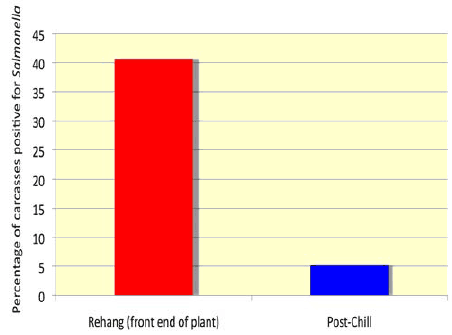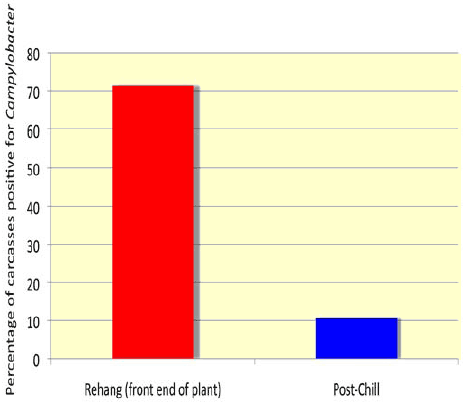



Control of Foodborne Pathogens in Raw Poultry in the US
How well is the poultry industry in the US controlling Salmonella, Campylobacter and other bacteria in raw poultry, asks Scott M. Russell, extension poultry scientist at the University of Georgia. The industry is doing an excellent job using interventions, he says in the latest issue of the University's Commercial Poultry Tips.Introduction
The USDA-Food Safety and Inspection Service (FSIS) just released a document entitled The nationwide microbiological baseline data collection program: Young chicken survey. The programme was designed and performed by the FSIS to estimate the percent positive and level of microbiological pathogens and indicator bacteria on raw chicken carcasses sampled between July 2007 and June 2008.
Methods
From July 2007 to June 2008, 6,550 broiler chicken carcass rinsate samples were collected at 182 establishments that slaughtered young chickens and produced whole carcasses under federal inspection. Samples were taken at two different locations within the plant (re-hang and post-chill) and were collected from two different shifts. The re-hang location is in the front of the plant just after picking and hock-cutting, before carcasses are transferred to the evisceration line. Carcass rinse samples were evaluated to estimate the percent positive rate and levels of multiple pathogenic organisms including Salmonella and Campylobacter. The presence and number of these bacteria were compared to determine if significant differences existed between samples taken at re-hang and post-chill and during the separate shifts. Figures 1 and 2 show the data obtained for Salmonella and Campylobacter prevalence on carcasses.


Summary
When results from re-hang and post-chill were compared, a reduction in the percentage positive rate was observed for both Salmonella (Re-Hang, 40.70 per cent; Post-Chill, 5.19 per cent) and Campylobacter (Re-Hang, 71.36 per cent; Post-Chill, 10.66 per cent). The Salmonella serotypes isolated most often from the young chicken samples during this survey were Kentucky, Heidelberg, Typhimurium and Typhimurium (Copenhagen), and these findings were consistent regardless of shift or whether the sample was obtained at either location.
These data demonstrate that the poultry industry is doing an excellent job using intervention strategies to reduce pathogens during processing.








